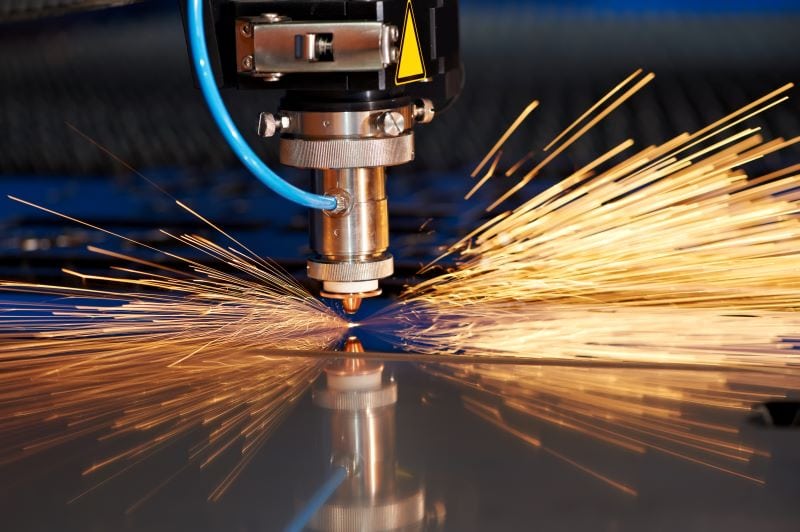2022 Mergers & Acquisitions Trends in Manufacturing
Published on by Harold Kremer in Consulting, Manufacturing, Transaction Advisory

The manufacturing sector has seen a sharp uptick in mergers and acquisitions over the past year, and the trend continues to accelerate. While COVID-19 initially stalled deal activity, within a few months production was back at pre-pandemic levels, and deal volume soared.
The reality is that manufacturing is uniquely positioned to impact overall economic growth, so the upward trend in mergers and acquisitions (M&A) is encouraging from more than one viewpoint. But what’s actually driving the trend, and how can manufacturers best respond to the rapidly changing market?
State of the Manufacturing Industry
The pandemic has affected individual manufacturing companies differently. However, the majority entered 2022 with a positive outlook on everything from future demand to growth rate, revenue, and customer satisfaction.
On average, manufacturers expect sales and labor to grow by 5.2 percent and 3.4 percent, respectively over the next 12 months. All other measures in the National Association of Manufacturers (NAM) 4th Quarter Survey were up: product price, employee wages, inventory growth, capital investments, and more. Supply chain issues are also expected to improve. (For more insights on the state of the supply chain, check out our recent event with supply chain expert and Rutgers University professor Dr. David Dreyfus – it’s available on-demand.)
According to McKinsey, “The industries with strong growth prospects include semiconductors, medical devices, communications equipment, and electronics.”
Factors Affecting EBITDA Multiples
Valuations are a critical component of M&A – and when it comes to valuations, many factors play a role – but revenue trends, margins, and profits tend to have the most significant impact. Manufacturers that weathered the COVID-19 storm with strong revenues and profits are seeing the highest earnings before interest, taxes, depreciation, and amortization (EBITDA) multiples in sale transactions.
There are several considerations that can each have a substantial impact on margins and profits. When profits are impacted, either positively or negatively, it hits the valuation as well.
The current multiple of EBITDA is a moving target. There isn’t a single number or range that selling companies should benchmark against. Company size, whether it’s in a specialty niche, and potential growth prospects can all influence the EBITDA multiple. Manufacturing companies with higher profits and growth prospects will tend to have a higher EBITDA multiple, too.
In the current market, there are three factors that are having a big impact on the valuation of manufacturers:
- Labor shortage
- Supply chain issues
- Shipping costs
For obvious reasons, each of these factors can have either a favorable or unfavorable effect on a company’s profits and growth. For example, some manufacturers had to turn away business in 2020 and 2021 because they were too short-staffed. Conversely, many manufacturers pre-ordered raw materials to increase inventory so they could mitigate supply chain disruptions; this too would impact short-term profits.
Some of the other factors currently affecting EBTIDA multiples are the size of the company, depth of management, level of bench strength, and the amount of customer concentration.
What’s Causing Manufacturing M&A to Heat Up?
Taxes and regulatory issues
The unknowns surrounding the capital gains tax toward the end of 2021 caused deal activity to spike before year-end. Since Biden’s full tax agenda wasn’t passed, the highest capital gains tax never went into effect, but ordinary income tax rates still went up in 2022. Further, there is still uncertainty about whether taxes will go up again or if there will be retroactive changes to contend with.
In the U.S. and elsewhere, the regulatory environment is also showing signs of becoming tighter. Expected regulatory hurdles are having the opposite effect in the short-term: many M&A stakeholders are looking at more deals in the next 12 months, not fewer.
Availability of funds
Private equity (PE) groups have almost always looked favorably at manufacturers as solid investments, and 2021 was no exception. Many PE groups had money to spend, so while funds were available, the deals pushed on. Even sales to other manufacturers were made possible through increased access to capital.
Growth strategy
Whether it’s buying other companies or acquiring competitors, many manufacturing executives are looking to M&A for at least half of their growth strategy in the next few years. They also see this growth as a solution to the labor shortage: more employees usually come with an acquisition.
Impact of COVID-19
COVID-19 caused many owners to rethink what they want to do with life. Some owners were already at retirement age when COVID-19 hit and were forced to place retirement plans on hold. For others, especially in manufacturing companies that did quite well, perhaps the pandemic accelerated retirement plans.
Also, consider that family-owned businesses were relying on the next generation to take over; in some cases, the next generation has also had time to rethink plans and may not want to stay in the family business.
Considerations for Manufacturing Owners Who Might Want to Sell
The first step is to understand the company’s true value. What can often happen in the beginning of the sales process is a gap in what the owner believes the company is worth and what the actual market value. If there’s time, a valuation can help pinpoint specific areas to work on, whether that’s inventory management, accounts receivable, or tax strategy.
Second, consider there may be more than one way to exit the business. Traditional sales are still common; however, interest in selling to a private equity investor or a special purpose acquisition company (SPAC) IPOs have increased markedly since 2019. If the goal isn’t to completely exit, alternative strategies like strategic partnerships and joint ventures are also being used at a higher rate than before
More than ever, investors and buyers may be looking toward a company’s position on environmental, social, and governance (ESG) issues. In a world where brands are expected to take part in larger conversations about sustainability and human rights, transparency matters. Manufacturers with an eye on M&A shouldn’t completely overlook this element
Contact Us
There are still many transactional opportunities for manufacturing company M&A in 2022. If you’d like more information about the transaction process or would like to discuss your circumstances, Barnes Dennig can help. Give us a call at 513.241.8313 or click here to contact us. We’re here to help.

